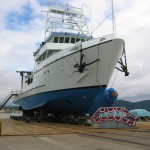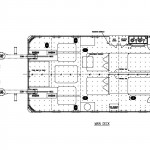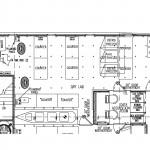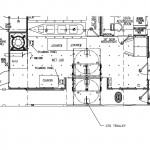 We recently had guests come down to take a tour of the Lewes campus and the Research Vessel Hugh R Sharp. One of the guests was wheelchair-bound and was limited to only seeing the main deck of the ship as getting to the rest of the ship would have required going up and down stairs. The Sharp has accommodations for handicapped scientists, but they are pretty much limited to the main deck. This limits their access to just the aft working deck, the wet and dry labs, the galley and the conference room. The wheels started turning during that tour on how to share the rest of the technological awesomeness of the Sharp with others. I decided to take my trusty $100 video camera in hand and record a video tour of the ship for those that are unable to navigate the stairs, and for classrooms and visitors who just can’t make the trek to Lewes for a tour. It’s a tad long, running just over 40 minutes or so, but it covers almost the entire ship. Enjoy!
We recently had guests come down to take a tour of the Lewes campus and the Research Vessel Hugh R Sharp. One of the guests was wheelchair-bound and was limited to only seeing the main deck of the ship as getting to the rest of the ship would have required going up and down stairs. The Sharp has accommodations for handicapped scientists, but they are pretty much limited to the main deck. This limits their access to just the aft working deck, the wet and dry labs, the galley and the conference room. The wheels started turning during that tour on how to share the rest of the technological awesomeness of the Sharp with others. I decided to take my trusty $100 video camera in hand and record a video tour of the ship for those that are unable to navigate the stairs, and for classrooms and visitors who just can’t make the trek to Lewes for a tour. It’s a tad long, running just over 40 minutes or so, but it covers almost the entire ship. Enjoy!
Many thanks to Captain Jimmy Warrington for taking time to do a whirlwind tour just prior to a science mission – as you can tell from the video, he’s a natural at relaying information about the RV Hugh R Sharp and its science capabilities.
Detailed drawings showing deck layouts and profiles of the Sharp can be found the RV Hugh R Sharp landing page, which includes PDFs of:
- General Overview of the Sharp
- Whole ship deck layouts
- Outboard drawings
- Link to the UNOLS site for the Cruise Schedule
To help you orient yourself a little bit as to the spaces that were covered, here are some deck diagrams to show the overview of a few of the spaces.



